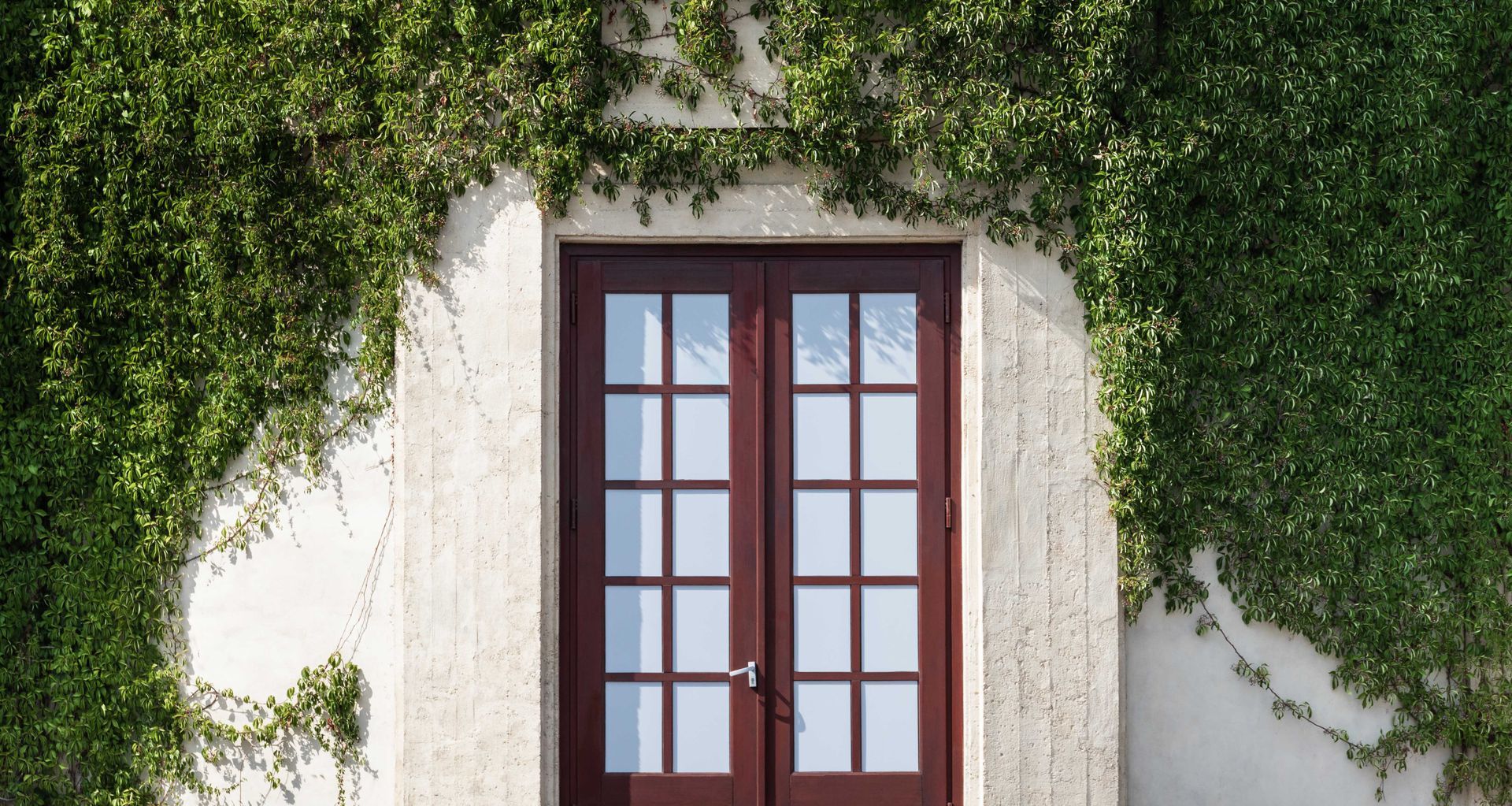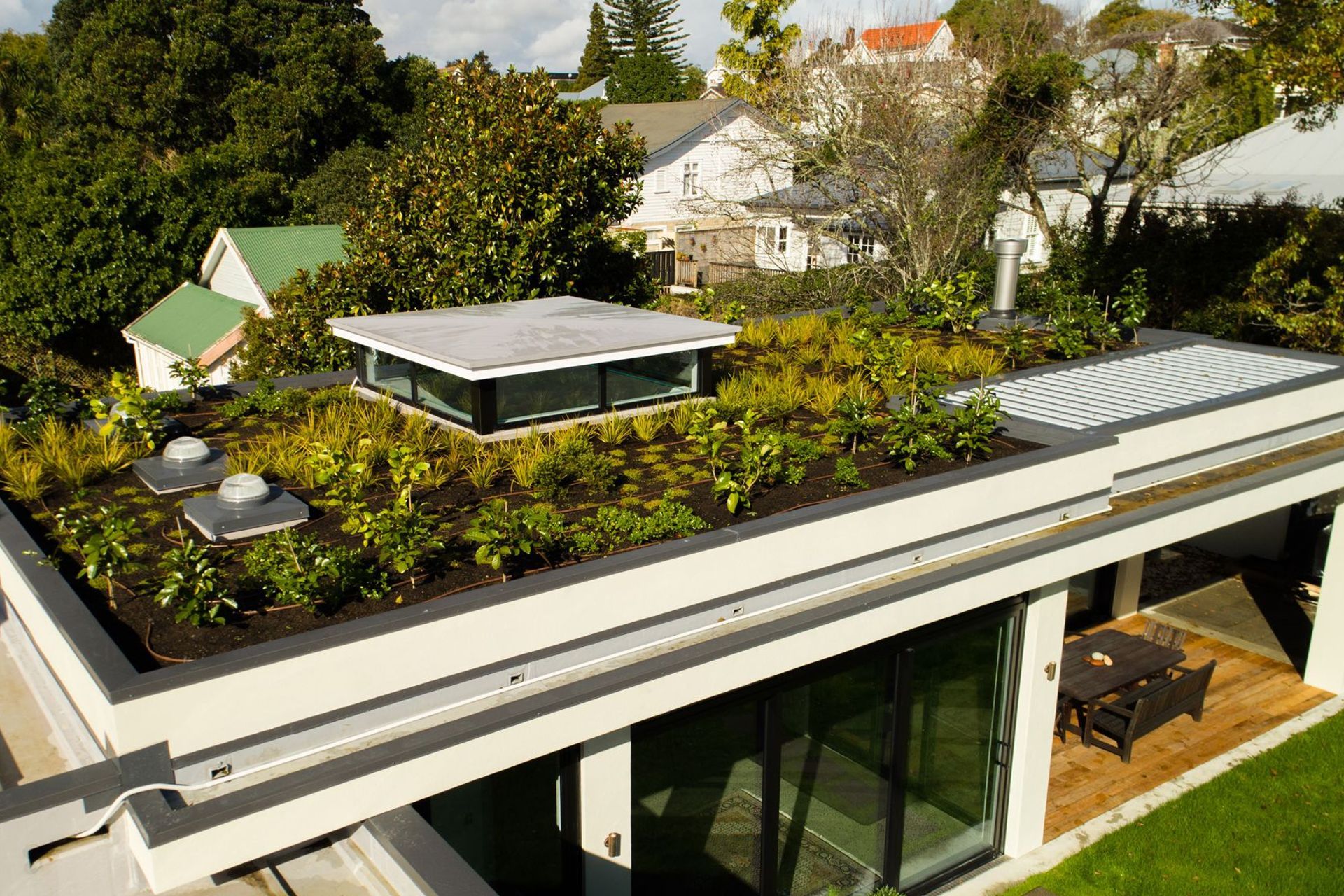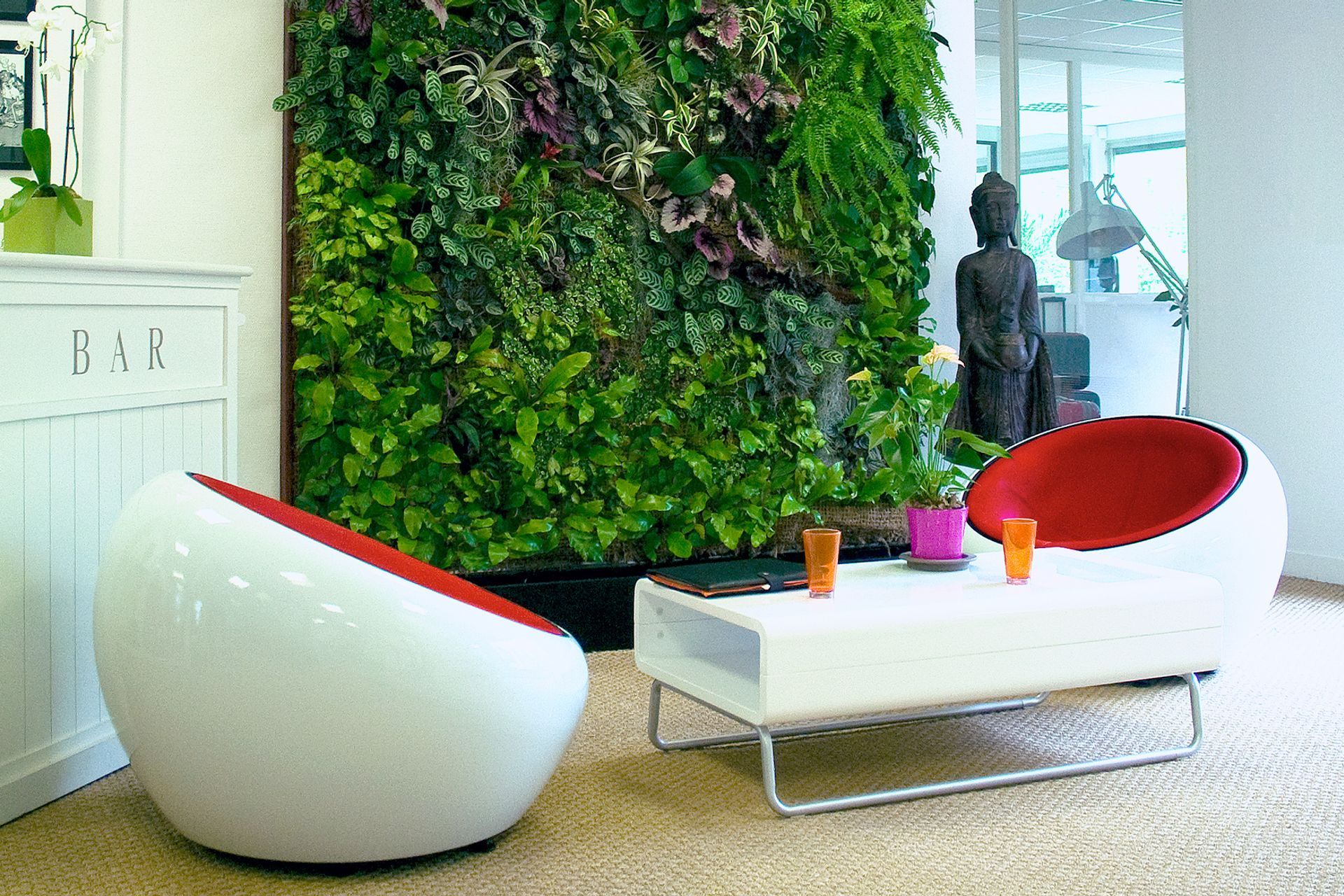Homes that breathe: how to incorporate living architecture
Written by
16 June 2020
•
6 min read

House plants and biophilic design are common ways to add more life and greenery to your property. But what if you want to go even further, to add more living elements to your home or add them in a more harmonious way within the makeup of the building? One way to do so is to embrace living architecture in the form of green walls and roofs - or, for that matter, living pools.
Both living walls and roofs are able to increase the square footage of green space in a home without the need for an extensive backyard and garden, or multiple space-taking plots and planters.
Here's how you can fuse living elements with the built environment using green walls and roofs and living pools.
What is a green roof?
A green roof effectively transforms the roof of your building into a garden, a new space for planting that can also enhance the thermal envelope of your home.
Green roofs come with a number of benefits. For a start, they increase sustainability and environmental efforts; they act as a carbon sink, pulling CO2 out of the air. They can improve stormwater management, as instead of the water running straight off the roof, much of it is absorbed and then filtered before being more slowly released.
Another major benefit of green roofs is the fact they are excellent insulators, trapping a lot of heat that would otherwise escape through the roof. They're also effective at keeping buildings cool during the hotter months of the year as the plants absorb heat from the air. In dense urban environments that absorb a lot of heat, green roofs have been tabled as a solution to reducing the heat island effect.
Are there different types of green roof?
There are three kinds of living roof: intensive living roofs; semi-intensive living roofs; and, extensive living roofs.
Intensive living roofs are essentially rooftop gardens. They're designed for high foot traffic and can have almost any kind of greenery planted on them. Because they're so versatile and able to accomodate plants as large as trees, they require a lot of structural support, deep substrate depths and often complex irrigation systems.
Semi-intensive living roofs are designed to hold smaller plants such as shrubs, grasses and mosses, and therefore require less strength and load support. This often makes them more cost effective compared with intensive living roofs.
Extensive living roofs have shallow substrates and are both the most affordable option for living roofs and often the easiest to retrofit onto existing rooftops. They usually contain only succulents, mosses and grasses, meaning they usually require little watering or maintenance.
What is a green wall?
Like adding greenery to the roof, plants can be added to walls too. A green wall is simply a wall with plants growing on or up it. But while the description might be simple, creating and caring for a green wall isn't as straightforward as attaching a bunch of plants to a wall.
Green walls can be made a number of ways, but there are two methods that are most commonly used.
The first is a kind of green facade, where the plants are allowed to grow up the wall from the ground. These kinds of green walls often have some kind of scaffold or structure placed over them so the plant has something to hold on to as it climbs its way up the wall.
The limitations of where a green facade can be installed are due to the fact that the plants are growing from soil or some other grounding material at the bottom of the wall. This means green facades are often found on exterior walls, where garden beds can be more simply created at the base of the wall.
The other kind of green wall is made with multiple small pockets of growing space in the wall itself. These green walls don't have plants growing up them — the plants actually grow out of the wall itself - and are generally known as living walls.

Either type of green wall can improve the air quality by filtering pollutants and expelling oxygen. Indoor air quality can sometimes be more unhealthy than fresh outdoor air, so green walls (alongside ventilation) can be a good way to improve the air.
Interior green walls in particular can be very effective at improving the indoor air quality and creating a peaceful ambience. Indoor green walls function in the same way as outdoor walls but are most commonly of the living wall variety with multiple growing pockets, as opposed to growing out of a soil bed on the floor.
What is a living pool?
There are two types of pools that utilise natural ecosystems to create a safe swimming environment. These are known as natural pools and living pools. Living pools are arguably the most natural and create their own ecosystem that becomes part of the surroundings.
A living pool is a body of freshwater that naturally regulates and cleans itself with bio filtration systems, much like the way bodies of water and the ecosystems around and within them behave naturally.
A living pool requires no chlorine, treatments or chemicals, remaining clean and hygienic independently. It is an organic version of a swimming pool containing living water. Living pools are different from natural pools, which require a regeneration zone of live flora and fauna. A living pool incorporates an underground bio and phosphorous filter that purifies the water, keeping it clear and alive.
What is a natural pool?
Natural pools are also bodies of living freshwater, however they are regulated in a more organic manner than living pools. The central design feature of a natural pool is the regeneration zone, which is planted with aquatic plants that oxygenate the water and filter it through their root systems.
Due to the aquatic plants in the regeneration zone, natural pools often appear as if they blend in with the surroundings, becoming more like a natural feature of the landscape than a traditional pool.
Along with plants, fish can be added to a natural pool, creating a different experience. Fish also help to keep insects at bay.
Both natural and living pools are designed to suit individual sites and can be different depths, shapes and sizes. Often, an existing pond or pool can be converted into a natural or living pool.
To learn more about living architecture, and how to make a green wall or roof or a living pool part of your build, get in touch with one of our architecture and design professionals today.


